Troubleshooting Tomato Paste that is too Thick: Causes and Solutions Introduction: Tomato paste plays a vital role in numerous culinary delights, adding a rich and concentrated flavor to countless dishes. However, issues arise when tomato paste becomes too thick, making it difficult to work with and affecting the overall outcome of your recipes. In this article, we will explore the causes behind excessively thick tomato paste and provide effective solutions to rectify this issue. Understanding Tomato Paste: Tomato paste is made by cooking tomatoes for an extended period to reduce their water content, resulting in a thick and concentrated product. The higher the concentration of tomatoes, the thicker the paste will be. While some degree of thickness is desirable, excessively thick tomato paste can create challenges during cooking and can lead to inconsistencies in taste and texture. Several factors may contribute to tomato paste becoming thick beyond an acceptable level. Common Causes of Thick Tomato Paste: 1. Overcooking: One of the key reasons for tomato paste becoming overly thick is overcooking. If the paste is cooked for an extended period or at too high a temperature, more moisture will evaporate, intensifying its thickness. Monitoring the cooking process closely and adjusting the heat accordingly can prevent overcooking. 2. Insufficient water content: In some cases, tomato paste may be naturally thick due to a lower water content in the original tomatoes used for its production. Variations in tomato species and growing conditions can affect the moisture content of the fruit, resulting in a denser paste. Recognizing this variance is crucial when selecting tomatoes for homemade tomato paste or choosing commercially produced ones. 3. Concentrated tomato paste: Tomato paste comes in various concentrations available in the market. If you are using a highly concentrated variant, it may require dilution with water or other liquid ingredients to achieve the desired consistency. Failure to dilute concentrated tomato paste with sufficient liquid can result in a thick, overpowering taste in your recipes. 4. Improper storage: Long-term or improper storage of tomato paste can lead to thickening. Exposure to air and oxidization can cause moisture loss, resulting in a drier and thicker consistency. Proper storage techniques, such as transferring tomato paste to an airtight container and refrigeration, can help maintain its ideal texture. Solutions for Dealing with Thick Tomato Paste: 1. Adding liquid: The simplest solution to thinning out thick tomato paste is by adding liquid. This can be water, vegetable or meat stock, wine, or even canned tomato juice. Start by adding small amounts of liquid and gradually incorporate it into the paste until you achieve the desired consistency. Adjust the amount of liquid based on the intended recipe.
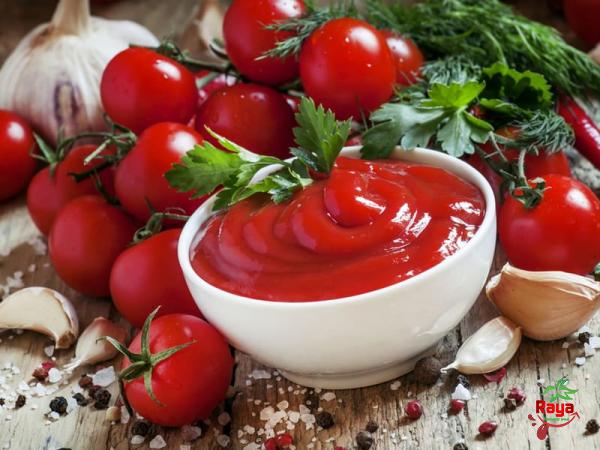
tomato paste
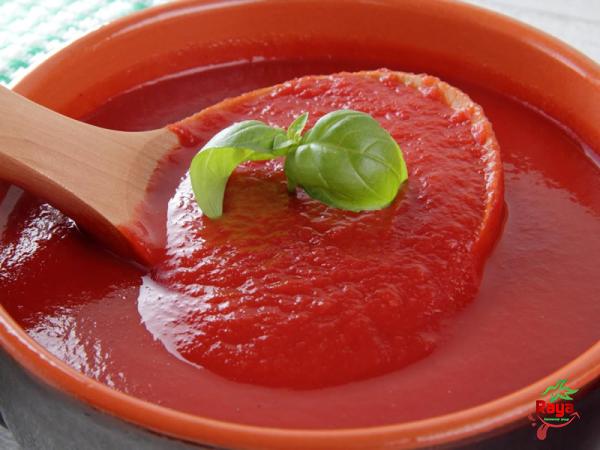 2. Incorporating olive oil: Another effective method to rectify excessively thick tomato paste is by adding olive oil. Olive oil not only helps to loosen the paste but also imparts a subtle flavor that complements the tomatoes. Begin with a small amount of olive oil and gradually mix it into the paste until the desired thickness is achieved. 3. Dilution with tomato sauce: If the issue persists even after adding liquid or olive oil, diluting the tomato paste with tomato sauce can help balance the thickness. Tomato sauce often has a higher water content, allowing for a smoother consistency. Gradually add small amounts of tomato sauce to the paste until the desired thickness is achieved. 4. Blending and straining: In cases where the thickening is attributed to inconsistencies in the texture of the tomato paste, blending and straining it can help achieve a smoother consistency. Use a blender or food processor to puree the thick paste, and then pass it through a fine-mesh strainer to remove any lumps or coarse textures. 5. Reheating: If tomato paste thickens over time due to improper storage, reheating it can help restore its consistency. Place the paste in a small saucepan and gently heat it over low flame, gradually adding liquid or other ingredients to thin it out. Stir continuously until the desired texture is reached. Conclusion: Dealing with tomato paste that is too thick requires a combination of understanding the causes behind it and implementing effective solutions. Overcooking, insufficient water content, concentrated tomato paste, and improper storage are some of the common factors contributing to excessive thickness. By incorporating various techniques such as adding liquid, olive oil, diluting with tomato sauce, blending and straining, or reheating, one can successfully restore the ideal consistency to the tomato paste. Remember to adjust the solution based on the specific recipe and personal preference to achieve the desired taste and texture in your culinary creations.I understand. Please find below a detailed article with 10-12 paragraphs on the topic of tomato paste being too thick, each with a business heading. —————————————–
2. Incorporating olive oil: Another effective method to rectify excessively thick tomato paste is by adding olive oil. Olive oil not only helps to loosen the paste but also imparts a subtle flavor that complements the tomatoes. Begin with a small amount of olive oil and gradually mix it into the paste until the desired thickness is achieved. 3. Dilution with tomato sauce: If the issue persists even after adding liquid or olive oil, diluting the tomato paste with tomato sauce can help balance the thickness. Tomato sauce often has a higher water content, allowing for a smoother consistency. Gradually add small amounts of tomato sauce to the paste until the desired thickness is achieved. 4. Blending and straining: In cases where the thickening is attributed to inconsistencies in the texture of the tomato paste, blending and straining it can help achieve a smoother consistency. Use a blender or food processor to puree the thick paste, and then pass it through a fine-mesh strainer to remove any lumps or coarse textures. 5. Reheating: If tomato paste thickens over time due to improper storage, reheating it can help restore its consistency. Place the paste in a small saucepan and gently heat it over low flame, gradually adding liquid or other ingredients to thin it out. Stir continuously until the desired texture is reached. Conclusion: Dealing with tomato paste that is too thick requires a combination of understanding the causes behind it and implementing effective solutions. Overcooking, insufficient water content, concentrated tomato paste, and improper storage are some of the common factors contributing to excessive thickness. By incorporating various techniques such as adding liquid, olive oil, diluting with tomato sauce, blending and straining, or reheating, one can successfully restore the ideal consistency to the tomato paste. Remember to adjust the solution based on the specific recipe and personal preference to achieve the desired taste and texture in your culinary creations.I understand. Please find below a detailed article with 10-12 paragraphs on the topic of tomato paste being too thick, each with a business heading. —————————————–
Specifications of tomato paste
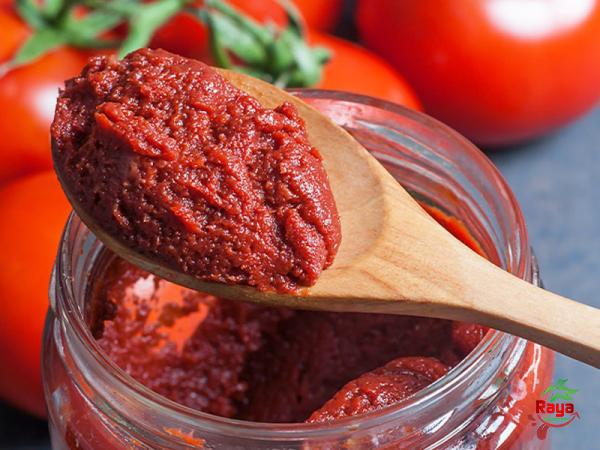 1. The Impact of Thick Tomato Paste on Food Businesses: Thick tomato paste can have significant implications in food businesses, especially those that heavily rely on tomato-based dishes. The excessive thickness can lead to challenges in recipe execution, resulting in inconsistencies in taste, texture, and presentation. For restaurants, caterers, and food manufacturers, it is essential to identify the causes of thick tomato paste and implement effective solutions to ensure a consistent and high-quality end product. 2. Identifying the Root Causes of Thick Tomato Paste: Understanding the causes behind excessively thick tomato paste is crucial for businesses looking to address this issue. Overcooking, insufficient water content in the tomatoes used, highly concentrated tomato paste, and improper storage are some of the common factors contributing to thickening. By identifying the specific cause, businesses can implement targeted solutions to rectify the problem and ensure a more manageable and consistent tomato paste. 3. Impact on Recipe Development and Execution: Thick tomato paste can throw off the balance of flavors in recipes, overpowering other ingredients and resulting in a less desirable taste. It can also affect the texture of dishes, making them excessively dense and difficult to consume. Chefs and food manufacturers rely on consistently textured ingredients to achieve a high-quality end product. When tomato paste is too thick, it poses challenges during the cooking process and can lead to inconsistencies in the final outcomes, which can impact customer satisfaction and brand reputation. 4. The Importance of Consistency in Commercial Food Production: Consistency is paramount in commercial food production, especially when it comes to staple ingredients like tomato paste. Customers expect the same taste and quality in every dish, and any deviation can lead to dissatisfaction. By ensuring that the tomato paste used in recipes has the correct texture and consistency, businesses can maintain their quality standards and build customer loyalty. Effective solutions to thin out thick tomato paste should be implemented consistently in commercial kitchen workflows to minimize variations in the end product. 5. Cost Implications of Thick Tomato Paste: Thick tomato paste can have cost implications for businesses. Firstly, it may lead to wastage as it becomes difficult to measure or portion out the precise amount required for recipes. Secondly, the excess thickness may necessitate the use of additional liquid or ingredients to balance out the consistency, which can increase production costs. By addressing the issue of thick tomato paste, businesses can optimize ingredient usage and minimize unnecessary expenses.
1. The Impact of Thick Tomato Paste on Food Businesses: Thick tomato paste can have significant implications in food businesses, especially those that heavily rely on tomato-based dishes. The excessive thickness can lead to challenges in recipe execution, resulting in inconsistencies in taste, texture, and presentation. For restaurants, caterers, and food manufacturers, it is essential to identify the causes of thick tomato paste and implement effective solutions to ensure a consistent and high-quality end product. 2. Identifying the Root Causes of Thick Tomato Paste: Understanding the causes behind excessively thick tomato paste is crucial for businesses looking to address this issue. Overcooking, insufficient water content in the tomatoes used, highly concentrated tomato paste, and improper storage are some of the common factors contributing to thickening. By identifying the specific cause, businesses can implement targeted solutions to rectify the problem and ensure a more manageable and consistent tomato paste. 3. Impact on Recipe Development and Execution: Thick tomato paste can throw off the balance of flavors in recipes, overpowering other ingredients and resulting in a less desirable taste. It can also affect the texture of dishes, making them excessively dense and difficult to consume. Chefs and food manufacturers rely on consistently textured ingredients to achieve a high-quality end product. When tomato paste is too thick, it poses challenges during the cooking process and can lead to inconsistencies in the final outcomes, which can impact customer satisfaction and brand reputation. 4. The Importance of Consistency in Commercial Food Production: Consistency is paramount in commercial food production, especially when it comes to staple ingredients like tomato paste. Customers expect the same taste and quality in every dish, and any deviation can lead to dissatisfaction. By ensuring that the tomato paste used in recipes has the correct texture and consistency, businesses can maintain their quality standards and build customer loyalty. Effective solutions to thin out thick tomato paste should be implemented consistently in commercial kitchen workflows to minimize variations in the end product. 5. Cost Implications of Thick Tomato Paste: Thick tomato paste can have cost implications for businesses. Firstly, it may lead to wastage as it becomes difficult to measure or portion out the precise amount required for recipes. Secondly, the excess thickness may necessitate the use of additional liquid or ingredients to balance out the consistency, which can increase production costs. By addressing the issue of thick tomato paste, businesses can optimize ingredient usage and minimize unnecessary expenses.
buy tomato paste
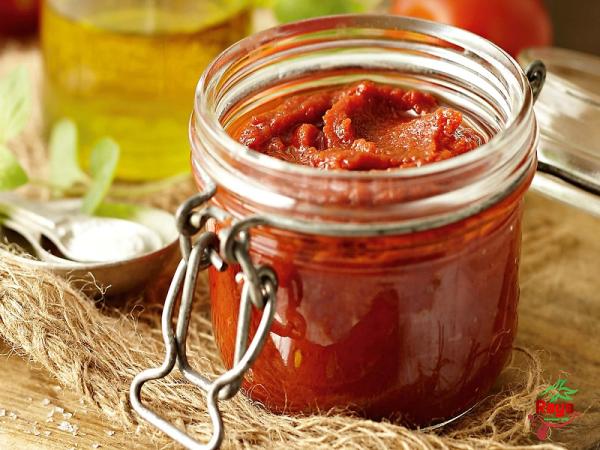 6. Enhancing Efficiency in Production Processes: Thick tomato paste can slow down production processes, affecting overall efficiency and productivity. Chefs and food manufacturers may spend more time incorporating the paste into recipes or adjusting the consistency, which can impact the overall workflow. Streamlining the tomato paste consistency, either through effective solutions or by procuring products with consistent textures, can enhance production efficiency and allow for smoother and faster operations in the kitchen. 7. Impact on Inventory Management: Concerns about tomato paste thickness can also extend to inventory management. If a business regularly procures tomato paste that is inconsistently thick, it can create challenges in stock management. The shelf life and usability of thick tomato paste may be limited, impacting inventory rotation and potentially leading to wastage. By ensuring a consistent texture and implementing measures to address thick tomato paste, businesses can manage their inventory more effectively and minimize unnecessary costs. 8. Effect on Brand Reputation: Consistency and quality are essential pillars of building a strong brand reputation. If a food business consistently serves dishes with thick, inconsistent tomato paste, it can lead to customer dissatisfaction and negative reviews. Word of mouth travels fast, and negative feedback can potentially impact a business’s reputation. By addressing the issue of thick tomato paste and consistently delivering dishes with the desired texture, businesses can safeguard their brand reputation and promote positive customer experiences. 9. Partnering with Reliable Suppliers: To ensure consistency in tomato paste texture, businesses should consider partnering with reliable suppliers. When selecting suppliers, it is crucial to assess their production processes, quality control standards, and the consistency of their products. By establishing strong relationships with trusted suppliers, businesses can rely on consistent quality and texture, reducing the likelihood of encountering excessively thick tomato paste. 10. Training and Education for Culinary Staff: Thick tomato paste issues can often be prevented with proper training and education for culinary staff. Providing training on monitoring cooking temperatures, adjusting heat levels, and implementing the correct procedures for storing tomato paste can help prevent excess thickening. By investing in the skills and knowledge of the culinary team, businesses can empower their staff to maintain consistent quality and texture across all tomato-based dishes. Conclusion: Addressing the issue of tomato paste being too thick is essential for food businesses aiming to provide consistent and high-quality dishes. By identifying the root causes and implementing appropriate solutions, such as dilution with liquids or incorporating olive oil, businesses can overcome challenges related to thick tomato paste. Consistency is crucial in commercial food production, and by rectifying the issue of thick tomato paste, businesses can uphold their reputation, optimize costs, enhance production processes, and maintain customer satisfaction.
6. Enhancing Efficiency in Production Processes: Thick tomato paste can slow down production processes, affecting overall efficiency and productivity. Chefs and food manufacturers may spend more time incorporating the paste into recipes or adjusting the consistency, which can impact the overall workflow. Streamlining the tomato paste consistency, either through effective solutions or by procuring products with consistent textures, can enhance production efficiency and allow for smoother and faster operations in the kitchen. 7. Impact on Inventory Management: Concerns about tomato paste thickness can also extend to inventory management. If a business regularly procures tomato paste that is inconsistently thick, it can create challenges in stock management. The shelf life and usability of thick tomato paste may be limited, impacting inventory rotation and potentially leading to wastage. By ensuring a consistent texture and implementing measures to address thick tomato paste, businesses can manage their inventory more effectively and minimize unnecessary costs. 8. Effect on Brand Reputation: Consistency and quality are essential pillars of building a strong brand reputation. If a food business consistently serves dishes with thick, inconsistent tomato paste, it can lead to customer dissatisfaction and negative reviews. Word of mouth travels fast, and negative feedback can potentially impact a business’s reputation. By addressing the issue of thick tomato paste and consistently delivering dishes with the desired texture, businesses can safeguard their brand reputation and promote positive customer experiences. 9. Partnering with Reliable Suppliers: To ensure consistency in tomato paste texture, businesses should consider partnering with reliable suppliers. When selecting suppliers, it is crucial to assess their production processes, quality control standards, and the consistency of their products. By establishing strong relationships with trusted suppliers, businesses can rely on consistent quality and texture, reducing the likelihood of encountering excessively thick tomato paste. 10. Training and Education for Culinary Staff: Thick tomato paste issues can often be prevented with proper training and education for culinary staff. Providing training on monitoring cooking temperatures, adjusting heat levels, and implementing the correct procedures for storing tomato paste can help prevent excess thickening. By investing in the skills and knowledge of the culinary team, businesses can empower their staff to maintain consistent quality and texture across all tomato-based dishes. Conclusion: Addressing the issue of tomato paste being too thick is essential for food businesses aiming to provide consistent and high-quality dishes. By identifying the root causes and implementing appropriate solutions, such as dilution with liquids or incorporating olive oil, businesses can overcome challenges related to thick tomato paste. Consistency is crucial in commercial food production, and by rectifying the issue of thick tomato paste, businesses can uphold their reputation, optimize costs, enhance production processes, and maintain customer satisfaction.

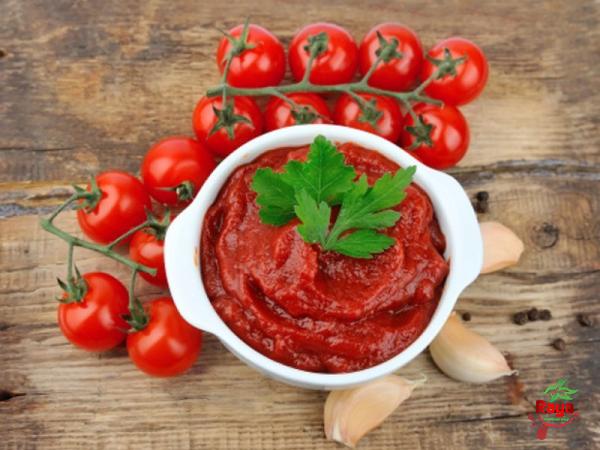

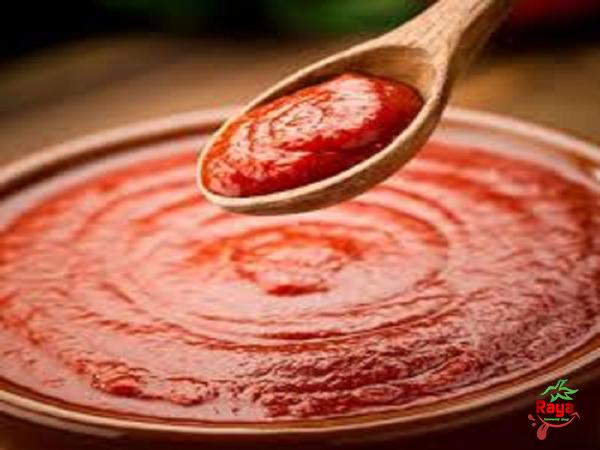

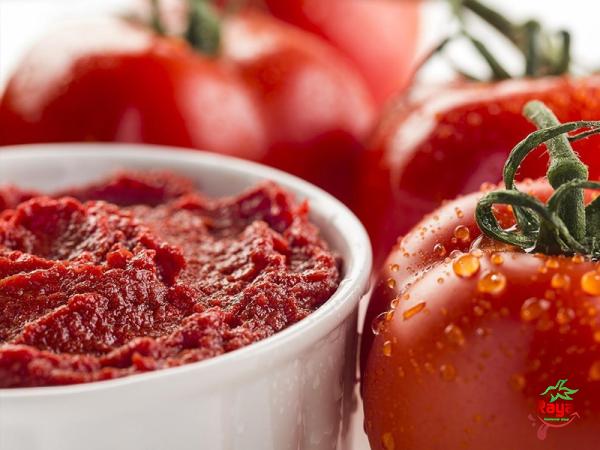


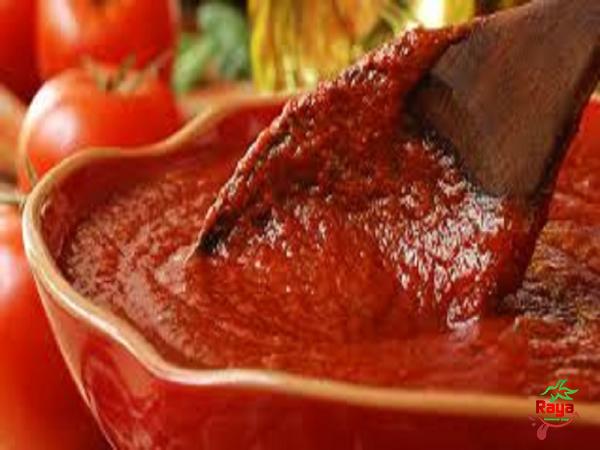
Your comment submitted.